This page is a collection of tricks I came up with and presentation ideas for other people’s tricks – some are cool, some are just strange (which is cool too when you think about it). Most of these tricks have never been performed. If anyone wants to learn them and do them – enjoy! (Though I retain rights to print, sell and broadcast them). If you decide to do one, it would be nice if you sent me a video of yourself performing it for someone. I might even post it here.
- Chris Philpott
A Great Opener for 12-Year-Olds
(Posted 4/14/2012)
.jpg)
My younger daughter asked me to do a magic show for her 12th birthday party. I came up with a routine and blogged about it; you can click here to see the post, which includes the full routine. Enjoy!
Destiny’s Aces
(Posted 1/26/2011)
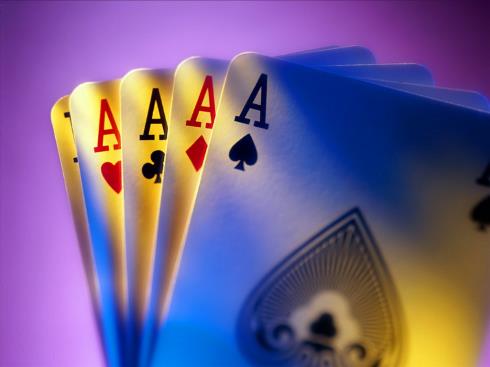
This effect ties into my blog post today about the role of self-esteem in magic. That post would make a good introduction to this, especially if you’re one of those people who think the description of most card tricks would be improved by long introductions.
This is a very simple trick but it gets reactions so strong that the first time it surprised me. This is basically a spectator finds the aces plot – the bulk of the handling I use comes from an effect in Joshua Jay’s Magic – as I recall he credits much of it to Syd Lorraine. Or maybe it was Harry Lorayne. Or Quiche Lorraine. I can’t remember now but it was one of the Lorraine brothers and I’m pretty sure it was after Zeppo Lorraine left.
In effect, you shuffle the deck as you tell the audience…
“In olden days, card sharks were so skilled and cheating devices like marked decks were so prevalent, that a player at a poker table could at any time request that a dealer deal from the bottom of the deck instead of the top so as to prevent marked cards being read and controlled into the dealer’s hand. So that’s what we’re going to do today – find the aces from a thoroughly shuffled deck, dealing from the bottom – a feat so difficult… I can’t do it. But I think you can. So as I deal the cards face down onto the table one by one I would like four different people to call out STOP at any point using nothing but intuition. Who would like to be first?”
And so the magician deals from the bottom one by one until the first spectator says stop – you put that card aside on the table and ask them to put their hand on it, but not to look at it yet. Then you ask who else would like to do it and repeat the dealing and selecting until four people have selected four cards.
You ask why they picked those particular cards:
“Was it just a feeling? Because earlier, I had a feeling, a premonition perhaps, about which cards would be chosen… and by whom.”
Then one-by-one the four people turn over their cards – not only have they successfully chosen the four aces, each ace is marked on the face with a sharpie and states the name of the person who selected it, as in “Emily will choose this card” and your signature. Of course, they get to keep the card with their name on it at the end.
The method is dirt simple. I’ll present a brief version here – if you want more detail (and pictures!) check out Jay’s book. About all I added was a (totally bogus) excuse for dealing from the bottom and the bit about the spectator’s names.
Here’s how you prep for the effect: you get the names of the people you will be doing it for and guess the order they’ll go in. That may not sound like much of a method, but it works (and it’s actually kind of fun).
For example, when I did the trick for friends who came for dinner, I guessed that when I asked for volunteers they’d let their daughter go first, then their son, then the mom, then the dad and so I arranged the aces accordingly. Sure enough, though I left it to them which order they would go, they followed the pattern I’d predicted. Once when I did it for some friends of my daughter at her birthday party, I asked my daughter beforehand to rank her friends in order of most to least likely to volunteer to assist a magic trick – in that case, I had control of picking from the group, but my choice pretty accurately reflected their enthusiasm when volunteering.
And if by chance your guess is wrong, it’s not that hard to do a kind of double glide to get to the proper ace.
As you begin the performance, the aces are on the bottom with one indifferent card beneath them and kept there with some basic riffle and overhand shuffle controls. Just before you begin dealing out the cards, you flash the bottom card, then do the glide, pushing the bottom five (or more) cards in about ¾ of an inch. You deal the bottom (indifferent) card, turning it face up, before thinking better of it and turning it face down. Now you take cards one by one from above the ace stack and when someone calls stop, you deal an ace onto the table close to that person.
Depending on everyone’s position, it’s nice to have them put a finger on their card. It’s nice to have them turn over their cards one-by-one. It’s very nice for you to give them the card with their name on it at the end.
That’s it. I thought it was a pretty little trick before I did it – the plot was perhaps a bit of a mish-mash but hell, Casablanca’s plot is a mish-mash – if the end result works, I don’t think it matters much.
But something happened when I first did the effect that made me think it was something more than just another pretty little card trick. It was at the performance at my daughter’s birthday. One of the four girls who selected a card hung onto it all night – I mean, it didn’t leave her hand for hours! She held onto it as the girls talked, she held onto it as they ate, and when they watched a movie together, it was in her hand the whole time.
Clearly, this is an example of the kind of magic I was talking about in my blog post today – magic that leaves someone with a gift, but also magic that implies some kind of skill on the spectator’s part – after all that girl just guessed where an ace might be and she was right! And it doesn’t hurt that the magical object had her name on it.
In the end, the card that girl hung onto was no longer just a card: it had become something magical, something wonderful, a talisman with secret powers that were somehow connected to her own magical energy.
It’s a good trick.

Suitopathy
(Posted 12/30/10)
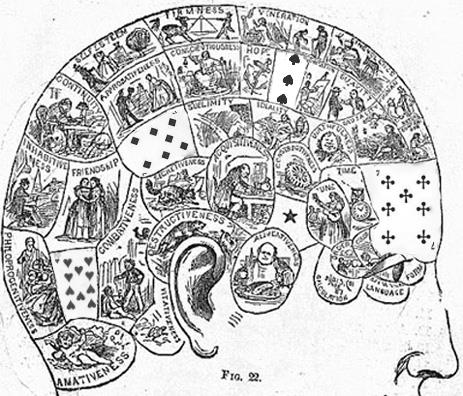
Effect: a deck is shuffled by one or more spectators then, without the magician touching the pack, he turns his back and the cards are dealt out one by one face up – the magician unerringly announces the suit of each card. Then, whenever the mood strikes them, the spectators can ask the value as well – the magician gets that right as well.
Method: I heard a great story last week (which I’ll share soon on my blog) about how Dai Vernon wordlessly enlisted another magician at a table to help him with a trick. It made me think of those times we find ourselves doing card tricks with at least one other magic aficionado at the table – in those circumstances after doing some other effects, I thought it would be fun to throw a curveball and sneak in a two-person effect. So yes, you will need a confederate for this effect and I know there may be some card purists out there who may feel uncomfortable with this to which I can only say, it’s okay... The ghost of Vernon absolves you…
This effect combines two old effects in a way which is, if not obvious, at least organic, so I wouldn’t be surprised if someone else had come up with it first. The first trick is the PSI card code found in Corinda. That effect is done with ESP cards – after the cards are shuffled, the confederate deals the cards face up and signals the symbol to the magician by the sounds the cards make as he deals them (I’ve always loved the deviousness of this).
The first part of this effect just applies the principle to suits. When the confederate deals a club, he places the card face up on the table with one click. With hearts he places the card down with two clicks. With spades he places it silently then slides it into position. With diamonds it’s a click then a slide. Repeat as desired.
Whenever the confederate feels like raising the stakes, he can ask what the value of the card is – this second part of the effect uses a verbal code. You probably already know several of these, but here’s one I worked out that’s kind of basic but easy to remember (that’s a concern for me since I have a bad memory). The confederate can ask for the card’s value in one of four basic ways: What’s the value? (three words) Tell me the value. (four words) Can you guess the value? (five words) and Can you tell me the value? (six words) The three word question corresponds to the three lowest values (ace, two, three), the four word question to the next three values (four, five, six)… etc.
So the question itself narrows it down to three cards – and which of the three is determined as follows: if the confederate says something just before the question, like the magician’s name, or “Hey!” , or “Okay, you got that right.” then that means it’s the lower of the three possibilities. If he says only the question then that means the middle choice. If he says something after the question that means it’s the third of the possibilities. That accounts for all values up to a queen. If the confederate says nothing – if he just pauses – that means it’s a king. In this case, when the magician senses the pause he could just add, “And if I’m not mistaken, it’s a King.”
Now what if other spectators start jumping in and demand to know the values of cards as well? Well, I’d say that’s to be encouraged actually (and the confederate could prod others to do so if it doesn’t occur to them). In this situation we switch to a variation of the first code. After the spectator challenges the magician the confederate signals the magician with a one, two, three or four word phrase as suits the moment. For example, if the spectator says, “How about this card?” the confederate could add, “Yeah!” (A-3) “Go on!” (4-6) “Go for it!” (7-9), “Give it a try!” (10-Q) or nothing (King).
This allows the magician to say “it’s a low card”, “not too low, not too high” “kind of high”, or “it’s a high card”. How the confederate answers the magician’s declaration signals which of the three is correct: silence here means the lowest of the three, a one-word answer (“Yeah” or “Maybe”) means the middle card and a two-word answer (“That’s right” or “could be”) means it’s the higher value card of the three.
To review:
To find the suits, the confederate makes the following noises with the cards as he deals:
One click = club
Two clicks = hearts
Silence then slide = spades
Click then slide = diamonds
To find the value, the confederate asks in the following ways:
“______, what’s the value?” = ace
“What’s the value?” = two
“What’s the value, ________ = three
“________, tell me the value.” = four
“Tell me the value.” = five
“Tell me the value, _________” = six
“_______, can you guess the value?” = seven
“Can you guess the value?” = eight
“Can you guess the value, ______” = nine
“________, can you tell me the value?” = ten
“Can you tell me the value?” = jack
“Can you tell me the value, _______” = queen
(Silence) = king
To find the value when someone else challenges the magician, the confederate adds:
(One word) = ace – three.
(Two words) = four – six
(Three words) = seven – nine
(Four words) = ten – queen
(Silence) = king
When the magician guesses the relative value of the card, the confederate responds with:
(Silence) = the lower choice
(One word answer) = the middle choice
(Two word answer) = the higher choice
Three things I’d like to add: first, if you want to add even another layer to this, you could start with a small memorized stack on top of the deck and have the confederate do a false shuffle and then get another spectator to deal. After a bit of that, the confederate could demand a new shuffle by several people and then take over the dealing as above. This would be a classic case of one method cancelling the other.
Second, if you wanted a climax, the confederate could have a stack of five pre-known and memorized cards hidden before you begin then palm them onto the bottom of the deck sometime during the effect (I'd do it by having the confederate announce the magician must be peeking somehow so he says instead of dealing onto the table, he'll deal onto a chair with the table blocking the magician's view -- once the deck is first below the table it would be easy to sneak a small stack onto the bottom of the deck.) Then, whenever the confederate determines (based on audience reaction) that the effect has gone on long enough, he could grab the bottom five cards of the undealt cards and spread them in a poker hand, keeping them close to his chest, and demand to know what they are, suit and value -- the magician would, of course, recite off the five cards -- the confederate would then reveal them to thunderous applause.
Finally, I wanted to mention that another time it’s
really fun to do a two-man routine is with your kids when you’re visiting
or when guests come over – kids love to be in on Dad’s tricks.
My daughter Marya, the actress of the family, adores playing the psychic and
she actually does it pretty well!

The Bar Code Card
Posted 10/11/10
Someone selects a card. The card is returned to the deck, which is then shuffled and put back in the case. You ask for the name of their card – they say the five of hearts. You say you knew that. You knew they’d choose that card this morning. You knew they’d choose that card last week. You say you knew they’d choose that card the instant you bought this deck of cards, the moment when the clerk scanned the bar code –because take a look at the code… and you point out the bar code on the deck, and tilt it along its edge and the name of the card is revealed in the lines of the code.
The selected card is a force. The reveal is based on those old cryptic codes where you look at what appears to be long lines but when you look at them along the edge, words appear. It struck me that you could hide a message with this technique in a bar code. Here are three I came up with:
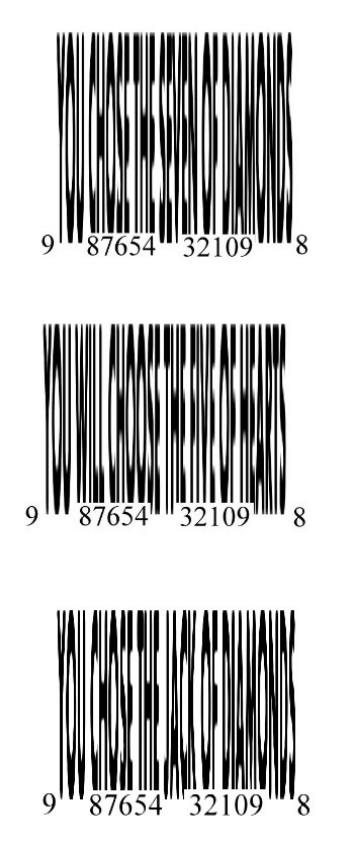
You really have to print these up to see how they work since
you can’t view a computer screen
off-angle the way you have to view this lettering. You can copy these into
your favorite word processing program and print them up, cut them out and
gluestick them onto a pack of cards. I bet you even have some old Avery labels
in the drawer under your printer – you could use those!
Another way to use this effect is as one of a set of outs for a card-freely-thought-of trick. You could stick this barcode on an invisible deck on the table (your safety if one of your outs doesn’t come along) and then stick another card in your wallet, a card on a spectator’s seat, one under your toupee and finally, one embedded in your spleen that can only be revealed by inviting the entire audience down to the closest hospital to witness your MRI!

Rock, Paper, Supremacy!
Posted 10/11/10
Here’s something fun I found while surfing the internets
– how to win at rock, paper, scissors
every time!
http://flowingdata.com/2010/07/30/how-to-win-rock-paper-scissors-every-time/
It struck me this could be the basis of a neat mentalist routine – if you got good at it, you could do this as a quick hit to establish your mind reading cred – and if it didn’t work out perfectly, heck, it was just a warm up, right?
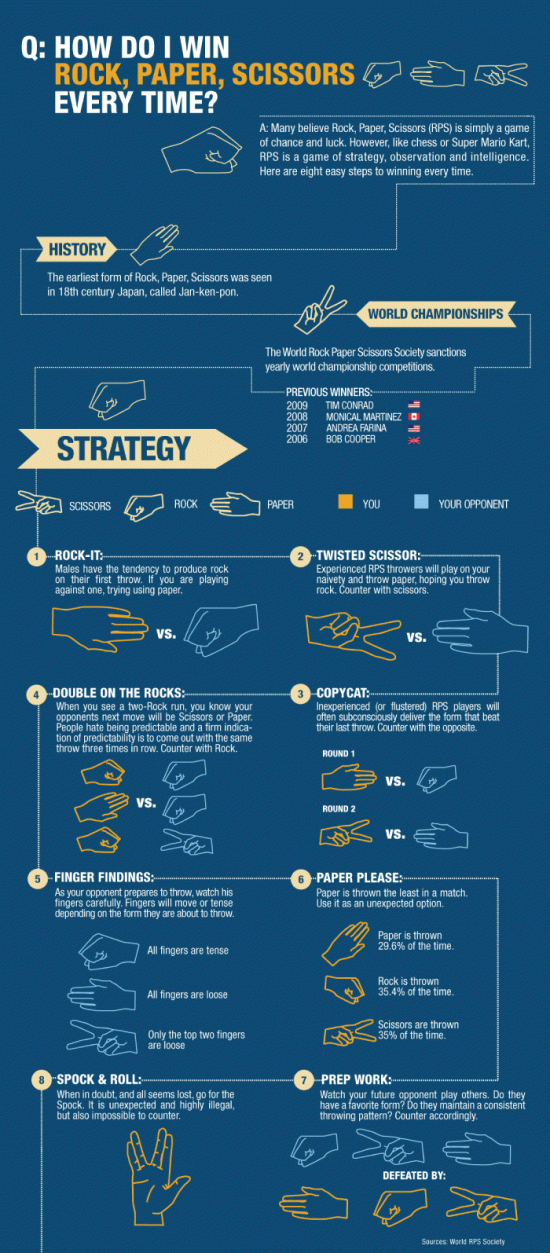

Flying Feet
Posted 10/11/10
There is a very cool sculpture by Friedrich Kunath on display at the Hammer museum here in L.A. that got me thinking about magic:
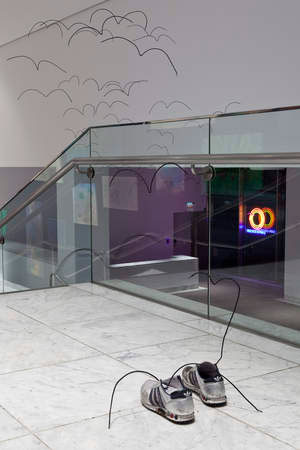
Here’s a bit from a Q&A between the artist and Sasha Mann:
SM: Can you talk about the pair of sneakers and the stream of birds that accompanies them? To me the piece evokes a nostalgia for boyhood. I wonder whether the empty sneakers symbolize an empty man or an invisible boy within the man.
FK: I liked the idea of transforming an everyday object, like the shoelaces we touch every morning, into a romantic projection of ourselves and our desires to disappear. I thought of this scene where someone is tying his shoes and literally his thoughts materialize into birds flying away… It almost had this subtext of “the dreamer is the realist of today.”
I include this dialogue for two reasons: first, notice how
the artist describes his work with the vocabulary of magic: “invisible”,
“transforming”, “disappear”, “materialize”...
It strikes me that magic is something other arts often aspire to and magicians
would do well to remind themselves of this fact – I think more serious
and evocative magic would result.
The other thing I wanted to point out is that in some of the
arts, artists are very quick to talk about symbolism and in others (like magic
or film), it rarely comes up and if it does, people get a little
self-conscious and don’t want to get into it, as if the meanings inherent
in their effects are little turds they have to pick up after their dog and
wrap in a plastic bag before the neighbors see. Good on you, visual artists,
for holding your turds high!
Anyway, Kunath’s work brought to mind those great self-levitation effects that are out there like Peter Loughren’s One (which I haven’t seen live, but looks awesome on Youtube). You could do an interesting version of the effect if you preceded one of those effects with your shoelaces flapping. Or perhaps you could add flapping wings on the top of your shoes. The simplest way would probably be to go out to one of those Halloween party stores and get one of those bats with flapping wings and staple those to your shoes (take your feet out first, kids). Then you’d have like this totally symbolic trick, you know? (No method here, since I haven’t come up with my own).
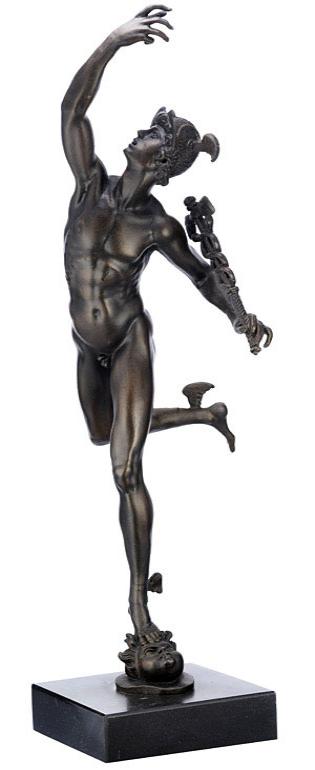 |
 |

Those Krazy Skammers
Posted 10/11/10
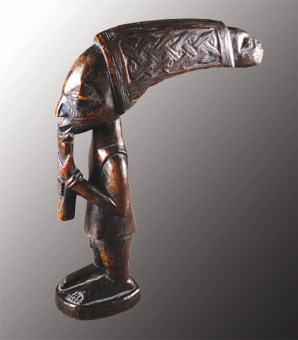
There are a bunch of really cool effects in Annemann’s Practical Mental Magic that don’t get performed much because they seem outdated. Like anything where you put bits of paper in a hat. One that I thought would be fun to do would be Bert Adams’ Krazy Kode, which, fortunately, involves no hats, but unfortunately involves a telegram.
Here’s how Adams did it: a telegram is read out and it makes no sense – two dice are thrown – the spectator is told to multiply the two numbers, count to that word and concentrate – then you call out letters one by one in jumbled order and you never make a mistake – when you get them he yells “Right!” You then tell him what the word is.
The trick is that 1) only so many numbers can come up by multiplying
the face of two dice and
2) you put words in those positions that are all made of the same letters,
but not only that, they are made of the same letters in a progression so that
if you recite the letters in order, you will never get a miss.
Now Adams came up with a list of words that works well (way to go, Bert!) I expended a brief amount of time looking for a better set, but gave up. The problem is, there’s really no way to get this collection of words to make sense, hence his solution: to make a telegram that was all messed up.
It occurred to me that the way to update this would be to use a Nigerian scam email. Everybody’s had a bunch of those and the English is generally horrible. It could be a logical and amusing setting for a good trick.
So to begin, the numbers that could come up when you multiply
the face of two dice are:
1, 2, 3, 4, 5, 6, 8, 10, 12, 9, 15, 18, 16, 20, 24, 25, 30, 36.
Here are Adams’ words (with a few alternatives)
I
Is
Sit, its, (tis)
Site, (ties)
Inset, (tines), stein
Instep
Stipend
Sprinted
President, enstriped
Pedestrian, (pedantries)
Desperation
Predominates, impersonated
And here’s the presentation I came up with – it
tells a story, so it’s really only for the
story-tellers and bizarrists out there. Since the effect is really a set of
little effects strung together (the divination of the letters that make up
the word), I thought it would be effective dramatically to tell a story (not
mine, a great African myth) and punctuate it with these little revelations
as if the magic was coming from the story itself:
“I got an incredible email today – I just have
to share it with you:
From Mr Tony Eshu,
Assistant to Mr. Peter Stein,
President of the Bank of Nigeria
Dear discrete value friend:
President Stein is desperation. I sprinted through pedestrian, I sit internet site, emailing you its inset proposition is multimillion stipend. Other similar emails impersonated predominates, but this offer’s completely enstriped with honesty. If we work instep to transfer funds of fifty-seven-million dollars onto your account yourself share will be 35% while reimbursements to us of 75%. Hasty and discretion is imperial. Sincerely, Tony Eshu.
Wow! Now some of you may think this is the business opportunity of a lifetime and some of you may think this is just another Nigerian advance fee scam – and you could argue amongst yourselves all day, but in this case, you’re both wrong. This email from Tony Eshu is something much stranger. You see, in Nigeria there are many tribes and many beliefs and one is called Orisha. Orisha is a religion with hundreds of gods, including Olokun, guardian of the ocean depths, the serpent Ochumare, god of rainbows and umbilical cords and a trickster god, a tempter who cannot be trusted named Eshu. Eshu is also the messenger between the gods and mankind. So, in this message, Tony Eshu doesn’t represent a bank president – he represents the old gods. This email is filled with very old magic.
And I’ll prove it. I want someone to think of a word in this email, but to make it totally random, first we’ll start with two people chosen at random – whoever catches these two dice. Each of you roll them a few times in your hands to make sure they’re fair, then roll them again. Show the top number to no one but each other. Are you happy with those two numbers or do you want to roll them again? Okay, now take those two numbers and multiply them together. Remember the answer. Got it?
Now take this email and this pencil – I want you to skip the headings and count the words in the body of the message, starting here: 1, 2, 3, 4, etc…. Count the words until you reach the word that corresponds to your number. Make sure no one can see it but you two. What I’m going to try to do is divine the word they’ve chosen at random and I’m going to do by telling a story about Eshu, because whenever his stories are told Eshu is present. Do you have a word? Okay, I will do this letter by letter as they come to me – they’ll probably be out of order, so as I call out the letters you cross them off the word, okay? As soon as you’ve crossed off all the letters in the word, shout out "that’s it" nice and loud, hopefully in unison: it’ll make a nice effect. Got it? Here’s the story:
One day, Eshu was walking down the road wearing a hat that was red on one side and black on the other. After Eshu departed, the villagers who had seen him began arguing about the stranger. The villagers on one side of the road said ‘I saw the stranger’s hat and it was red. The villagers on the other side said, No, I saw… I… I… Is there an I? Don’t forget to shout out that’s it when I get all the letters.
The villagers on the other side of the road said I saw the hat and it was black. No one could agree on the color of the stranger’s hat… Ssssstranger’sss… Is there an S? (IS) The color of the Stranger’s hat. Soon the villager’s tiff… Tiff? Is there a T? (SIT, ITS) The tiff escalated… Is there an E? (SITE) And the villagers went to get weapons – weapons. Wwweapons – no, not W, no, no, nnno – but there is an N isn’t there? (INSET, STEIN).
War broke out – it was a terrible war and everyone
perished – is there a P? (INSTEP) There was only one thing left in the
village… Is there a D? (STIPEND) Death. Eshu laughed. The other gods
asked why he was laughing and he said "Strife makes me… rejoice.”
Is there an R (SPRINTED)? Eshu repeated his experiment in another village,
but this village had heard about… Eshu – is there an E? (PRESIDENT,
ENSTRIPED) And this time, the villagers refused to argue... Is there an A?
(PEDESTRIAN) Argue over differences of… Is there an O? (DESPERATION)
opinion. And so this village lived in peace until the end of t-t-t-t-timmmmmmmmmmmmmme.
Is there an M? (PREDOMINATES, IMPERSONATED).
Obviously, you can tell which word was chosen by how long it is. In several cases, there are two possibilities. In three of these (its/sit, inset/stein, impersonated/predominates), ask if the word begins with an I – then say, “No, I started with an I – if the letters are arranged properly it begins with a…” For President/enstriped ask if it begins with an E – if no, then blame it on Eshu which begins with an E…
As a final bit of craftsmanship, ideally the story finishes just as they shout “Right!” So what happens if the story isn’t done when they call out “Right”? Well, if they choose the first option (I), sucks to be you, huh? If they chose any one of the 17 other possibilities then you can pretty much add a line or two to wrap it up and just end. Let’s face it, the meat of the story is the villagers seeing the hat and arguing, and after that, you can just cut to the chase with a “and they argued for days and weeks and Eshu laughed – this is the power of Eshu. Thank you, Seattle!” Obviously, the whole bit with the second village isn’t necessary and can easily be cut.
I think this one is pretty cool – I might even do it myself one day.

Share the risk!
Posted 10/11/10
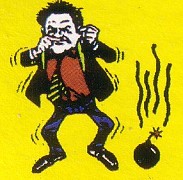
You know that trick where the magician slams his hand down on cups and under one is a spike? And you know all those Youtube “magic gone wrong” videos where the magician screws it up? Well, I thought, why should the magicians take all the risk? Why shouldn’t we spread the risk around? What if, instead of a spike under the cup, there was a stink bomb? Or a bag of bees? I bet those bored spectators would sit up and take notice then!
But considering how often these things seem to screw up, this
trick should probably never be done. (But if you do, and you screw it up,
send me the footage!)


Gum on my Shoe!
Posted 10/11/10
Here’s another idea rather than a trick with every detail worked out (for you comedy magicians out there). What if you were on stage and lifted your foot and there was a long string of gooey gum stuck to the bottom of your shoe? After milking it for the appropriate Red Skelton-esque laughs, you wave your magic wand, sprinkle your pixie dust and lift your foot… and the gum has vanished! But you lift your other foot and now it’s there. You make it vanish and it appears under the first foot! You do a two-hander next – it vanishes under both feet, but you notice something unpleasant in your mouth – you blow a bubble, pop it, remove the gum and toss it to the floor for some other hapless sap or sapless hap – whoever comes first.
At this point the only method I can think of is fake soles – the top of the fake soles match the floor you’ll be performing on and the bottoms match, well, your real soles. The fake soles are held to the bottom of your shoes with magnets. You’ve got some gum or other sticky stretchable pink material placed between the fake sole and your real one. You detach the fake sole from your real sole by hooking it on a nail jutting from floor.
Here are diagrams I made using that highly advanced drawing program, Microsoft Paint:
Cross-view of shoe and floor: 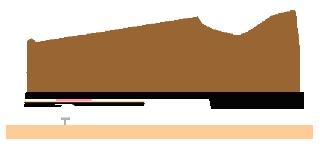 |
Close up of the gimmick: 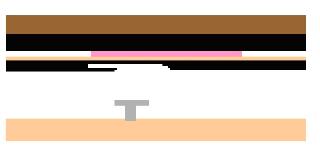
|
Not sure if this would work, but if it did, and it was performed
reasonably well, I’d laugh.

©Chris Philpott 2011. All rights reserved. Original designs and content
by Kathleen Breedyk and Chris Philpott.
Contact Us.

